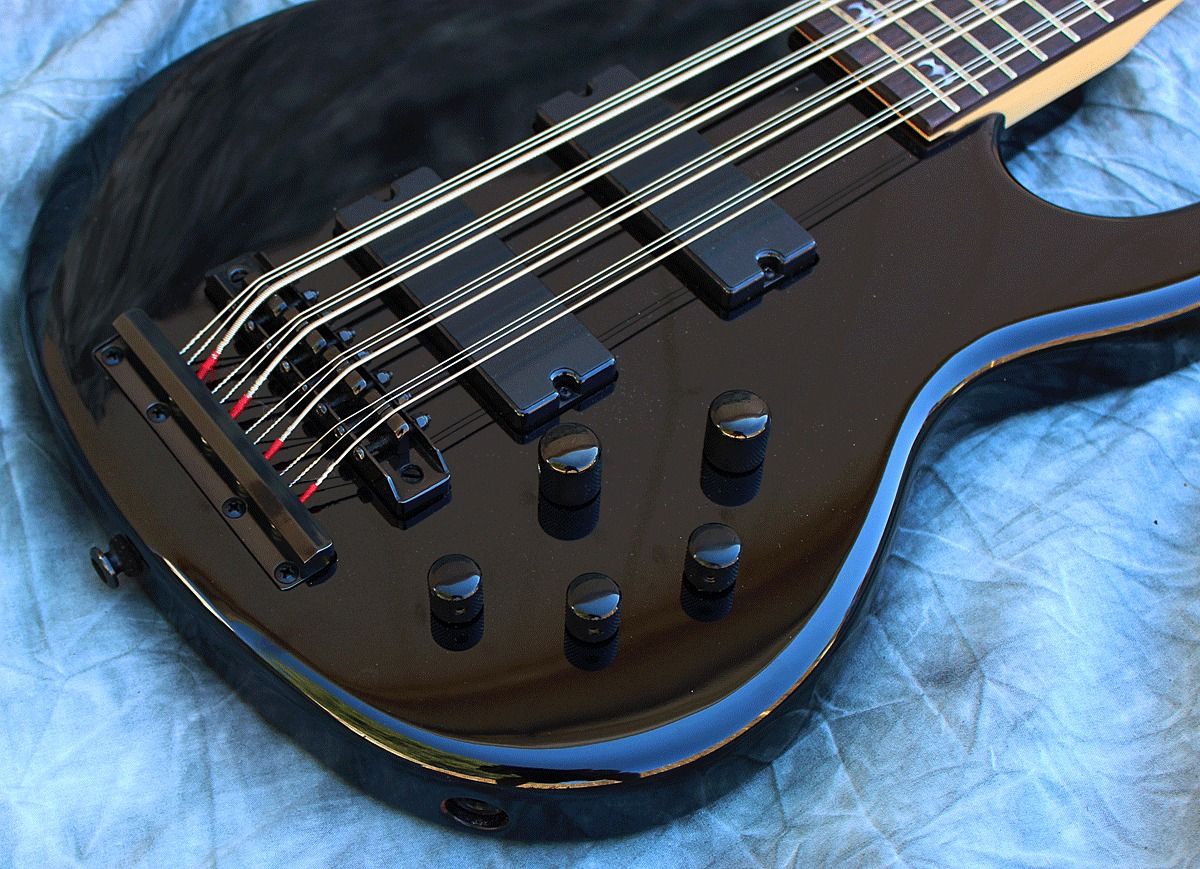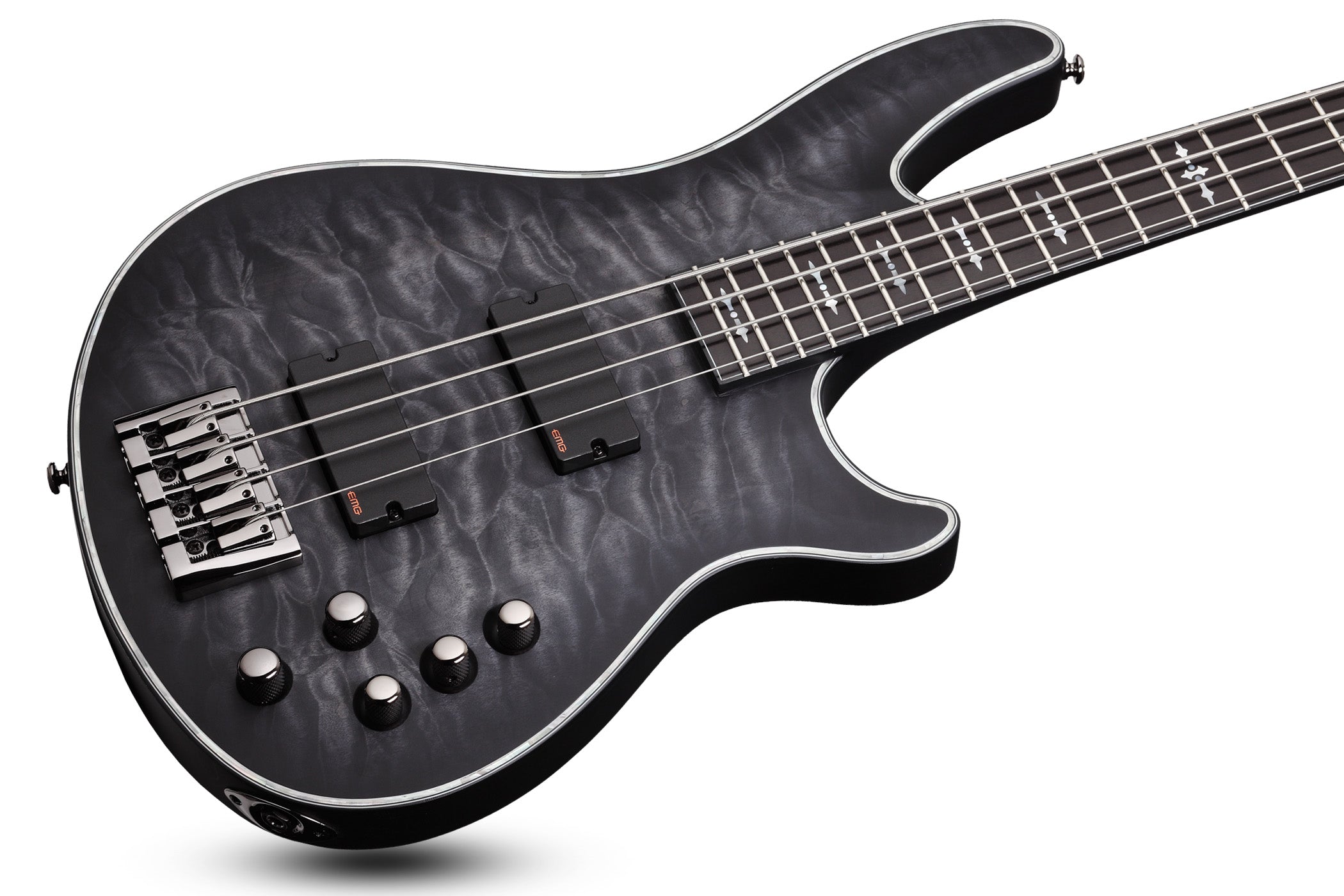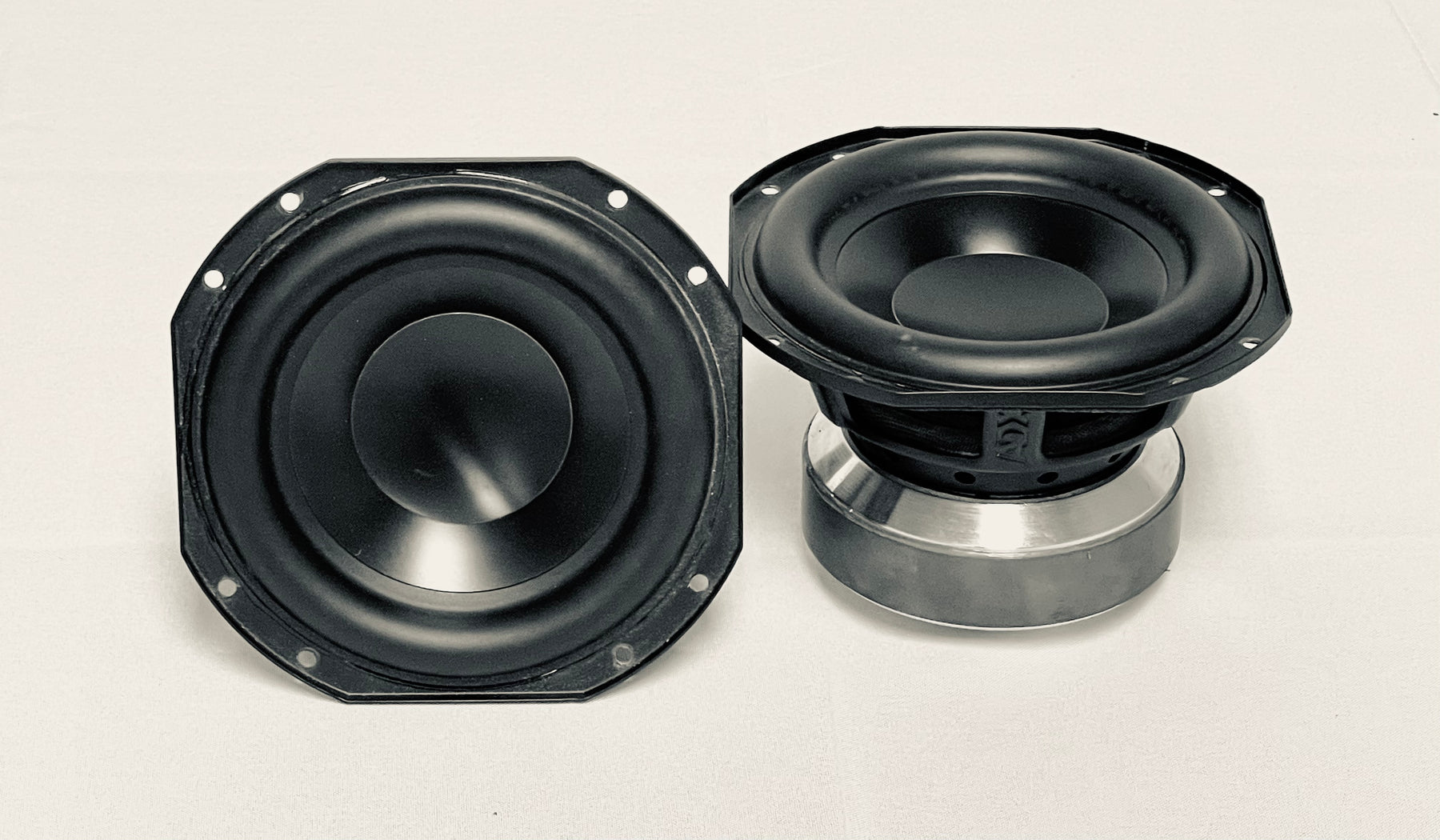Home>Instruments>Bass>What Is Future Bass


Bass
What Is Future Bass
Modified: January 22, 2024
Discover the innovative sounds of Future Bass and learn what sets it apart from other electronic music genres. Experience the deep, rich bass that defines this genre and join the musical revolution.
(Many of the links in this article redirect to a specific reviewed product. Your purchase of these products through affiliate links helps to generate commission for AudioLover.com, at no extra cost. Learn more)
Table of Contents
Introduction
Music evolves with time, taking various forms and genres to captivate listeners around the world. One such genre that has gained significant popularity in recent years is Future Bass. Blending elements of electronic dance music, hip-hop, and R&B, Future Bass has carved a niche for itself in the music industry.
Future Bass emerged as a subgenre of electronic dance music in the early 2010s. With its futuristic soundscapes, catchy melodies, and heavy basslines, it quickly caught the attention of music enthusiasts craving something fresh and innovative. The genre’s unique combination of ethereal melodies, trap-style beats, and synthetic elements has made it a favorite among both mainstream and underground audiences.
The core appeal of Future Bass lies in its ability to create a sonic journey that evokes emotions and transports listeners into a different world. It is characterized by lush synth chords, melodic vocal chops, and heavy bass drops that induce a sense of euphoria and energy. Future Bass often incorporates elements of pop music, making it accessible to a wider audience.
What sets Future Bass apart from other genres is its emphasis on melodic content and attention to detail in sound production. The use of unique and innovative sound design techniques, such as pitch bending, waveform manipulation, and modulation effects, contributes to the genre’s distinct sonic identity. This attention to detail has garnered praise from not only music listeners but also music producers and sound engineers worldwide.
In this article, we will explore the origins of Future Bass, dive into its defining characteristics, examine the impact it has had on the music industry, and shed light on the production techniques employed in the genre. We will also delve into the influence of Future Bass on other genres and its presence in mainstream pop music, film, and television. By the end of this article, you will have a comprehensive understanding of what Future Bass is all about and why it continues to captivate a global audience.
Origins of Future Bass
The origins of Future Bass can be traced back to the early 2010s when producers began experimenting with different sounds and production techniques within the realm of electronic dance music. Artists such as Flume, Cashmere Cat, and Rustie played instrumental roles in shaping the genre and laying the foundation for its development.
One of the key figures in the emergence of Future Bass is the Australian producer Flume. His self-titled debut album released in 2012 garnered massive attention and critical acclaim, propelling Future Bass into the mainstream. Flume’s distinct blend of dreamy melodies, intricate percussion, and heavy basslines set the tone for the genre’s evolution.
Another influential artist in the genre’s early days was Cashmere Cat. Hailing from Norway, he gained recognition for his unique approach to production, infusing Future Bass with elements of R&B and hip-hop. Cashmere Cat’s experimental soundscapes and innovative sampling techniques helped push the boundaries of the genre and inspire future artists.
Rustie, a Scottish producer, also played a pivotal role in shaping the sound of Future Bass. His album “Glass Swords,” released in 2011, showcased his ability to fuse electronic and hip-hop influences, creating a distinct and energetic sonic landscape. Rustie’s contribution to the genre’s development cannot be overstated, as he opened doors for experimentation and pushed the boundaries of what Future Bass could sound like.
As Future Bass gained traction, more producers and artists began exploring the genre’s potential, infusing their unique styles and influences. Names like What So Not, San Holo, and Odesza became synonymous with the evolution of Future Bass, each contributing their own flavor and pushing the genre in new directions.
While the genre’s origins can be traced back to specific artists and albums, it is important to note that Future Bass was not born out of a single moment or a definitive sound. Rather, it is a genre that has evolved through the collective efforts of producers and artists, each adding their own touch to its sonic palette.
With its roots firmly planted in electronic dance music, Future Bass continues to evolve and attract new talents who are pushing the boundaries even further. The genre’s origins may be rooted in the past, but its future is undoubtedly promising and filled with endless creative possibilities.
Characteristics of Future Bass
Future Bass is known for its distinct sonic characteristics that set it apart from other genres. While it encompasses a wide range of sounds and styles, there are several key elements that define the genre.
1. Emotional Melodies: The melodies in Future Bass are often ethereal and emotive, designed to evoke powerful emotions within the listener. They can be catchy and uplifting or melancholic and introspective, creating an immersive sonic experience.
2. Heavy Basslines: True to its name, Future Bass emphasizes deep and powerful basslines. These basslines can be melodic and harmonically rich, adding an impactful foundation to the music. The combination of emotional melodies and heavy bass creates a unique contrast that characterizes the genre.
3. Pitched Vocal Chops: Another defining feature of Future Bass is the use of pitched vocal chops. These vocal samples are often sliced and manipulated to create rhythmic, melodic, and percussive elements in the music. They add a human touch and complement the overall texture of the genre.
4. Innovate Sound Design: Future Bass is known for its attention to detail in sound production. Producers employ innovative sound design techniques to create unique and compelling textures. This can include manipulating waveform shapes, experimenting with modulation effects, and using intricate layering to achieve a distinct sonic identity.
5. Hybrid Influences: Future Bass draws influences from various genres, making it a versatile and dynamic genre. It incorporates elements from electronic dance music, hip-hop, R&B, trap, and pop. This fusion of styles gives Future Bass its eclectic sound and broad appeal.
6. Euphoric Builds and Drops: Building tension and releasing it in climactic drops is a common feature in Future Bass. The genre often features euphoric builds with swelling synths and impactful drum patterns, leading to powerful drops that energize the listener.
7. Use of Sampling and Sampling Techniques: Future Bass frequently incorporates samples and employs creative sampling techniques. Producers sample from a variety of sources, including vocals, classic tracks, and unconventional field recordings. These samples are manipulated and transformed to create unique textures and melodies.
Collectively, these characteristics contribute to the allure of Future Bass. The genre’s ability to evoke a range of emotions, its attention to detail in sound production, and its incorporation of diverse influences make it a standout genre within the electronic music landscape.
Popular Future Bass Artists
Future Bass has garnered a dedicated following of both listeners and artists alike. Numerous talented musicians have made significant contributions to the genre and have become synonymous with the Future Bass sound. Here are some of the standout artists who have made a name for themselves in the world of Future Bass:
1. Flume: As one of the pioneers of Future Bass, Flume’s innovative productions and dreamy melodies have captivated audiences worldwide. His self-titled debut album propelled him to international fame and earned him critical acclaim. Flume continues to push the boundaries of the genre with his unique blend of electronic and experimental sounds.
2. San Holo: Known for his signature guitar-driven melodies and uplifting beats, San Holo has gained a massive following within the Future Bass community. His track “Light” became a breakout hit, showcasing his ability to craft catchy melodies and incorporate organic elements into his music.
3. Illenium: Illenium has become a sensation in the world of Future Bass, known for his emotionally charged productions and powerful drops. His melodic style and collaborations with vocalists have struck a chord with listeners, earning him success on both mainstream charts and within the EDM scene.
4. Marshmello: While Marshmello is primarily associated with the subgenre of EDM known as “Marshmello Music,” he has also dabbled in Future Bass. His tracks often feature infectious melodies, energetic drops, and collaborations with notable artists, making him a force to be reckoned with in the Future Bass scene.
5. Ekali: Ekali’s unique blend of Future Bass and trap influences has garnered attention and praise. His intricate sound design, hard-hitting drops, and incorporation of hip-hop elements have earned him a dedicated following and collaborations with respected artists.
6. Alison Wonderland: While Alison Wonderland’s music spans multiple genres, she incorporates elements of Future Bass into her tracks, adding a unique touch to her energetic and emotive sound. Her ability to blend Future Bass with pop sensibilities has solidified her status as a versatile and influential artist.
7. Louis The Child: Louis The Child is known for their infectious melodies, playful production style, and fusion of Future Bass with elements of pop and hip-hop. Their tracks often feature catchy hooks, shimmering synths, and bouncy basslines, creating a distinct and accessible sound.
These artists represent just a few of the many talented individuals who have left their mark on the Future Bass genre. Their contributions have helped shape Future Bass into the diverse and exciting genre that it is today, attracting a loyal fanbase and inspiring up-and-coming producers to explore the genre’s potential.
Production Techniques in Future Bass
Future Bass is characterized by its unique and innovative sound production techniques. Producers in this genre employ a range of methods to achieve the distinctive and captivating soundscapes that define Future Bass. Here are some key production techniques commonly used in Future Bass:
1. Chord Stacking: Future Bass often features lush and intricate chord progressions. Producers achieve this by stacking multiple layers of chords, using different synths or instruments, and blending them together to create rich and harmonically complex sounds. This technique adds depth and texture to the music.
2. Pitched Vocal Chops: Vocal chops play a significant role in Future Bass tracks. Producers sample and manipulate vocal recordings, slicing them into small fragments, and then pitch them up or down to create melodic elements. This technique adds an organic and human touch to the otherwise electronic soundscape.
3. Synth Design and Sound Manipulation: Sound design is crucial in Future Bass. Producers experiment with different synthesis techniques, such as wavetable, FM, and granular synthesis, to create unique and evocative sounds. They apply various effects, like reverb, chorus, and delay, to manipulate the texture, space, and movement of the sounds.
4. Layering: Layering is another key technique used in Future Bass production. Producers combine multiple sounds or instruments, such as synths, pads, and atmospheric samples, to create a rich and dense sonic texture. Layering adds complexity and depth to the overall mix, making it sound fuller and more immersive.
5. Percussion and Drum Programming: The percussion and drum elements in Future Bass are often intricate and energetic. Producers use a combination of programmed drums and samples, incorporating elements from trap, hip-hop, and EDM. They carefully manipulate the rhythm, velocity, and dynamics to create punchy and dynamic drum patterns.
6. Sidechain Compression: Sidechain compression is a popular technique used in Future Bass to create the characteristic “pumping” effect. By sidechaining the bass or other elements to the kick drum, the volume of those elements is automatically reduced when the kick hits, creating a rhythmic and pulsating feel.
7. Reverse Reverb: Reverse reverb is a technique used to create dramatic transitions or buildup effects. The reverb tail of a sound is reversed and placed before the original sound, giving a reverse swelling effect that leads to the next section or drop. This technique adds tension and excitement to the track.
These production techniques, among others, contribute to the vibrant and dynamic sound of Future Bass. Producers continually experiment with new methods and tools to push the genre’s sonic boundaries, ensuring its evolution and continued appeal.
Influence of Future Bass on Other Genres
Future Bass has had a significant influence on the music landscape, transcending its own genre boundaries and inspiring artists in other genres. Its innovative sound and production techniques have made a lasting impact on various musical styles. Here are some of the ways in which Future Bass has influenced other genres:
1. Pop Music: Future Bass has made a profound impact on the pop music scene. Its fusion of electronic elements, catchy melodies, and emotional undertones have been embraced by mainstream pop artists. The incorporation of Future Bass elements in pop tracks has become a trend, creating a unique blend of commercial appeal and underground sensibility.
2. EDM and Dance Music: Future Bass has had a significant influence on the electronic dance music (EDM) scene. Many EDM producers have integrated Future Bass elements into their tracks, adding emotional depth and melodic intricacy to their music. The genre’s innovative sound design techniques and memorable drops have found their way into various EDM subgenres, enriching their sonic palette.
3. Trap and Hip-Hop: Future Bass shares sonic elements with trap and hip-hop, leading to a cross-pollination between the genres. Producers and artists have merged the hard-hitting beats and basslines of trap with the dreamy melodies and atmospheric sounds of Future Bass. This fusion has given rise to a subgenre known as “trap-influenced Future Bass,” further expanding the creative possibilities within both genres.
4. R&B and Soul: The emotive and soulful nature of Future Bass has influenced contemporary R&B and soul music. Artists in these genres are incorporating Future Bass elements into their productions, creating a hybrid sound that combines smooth vocals with the genre’s characteristic basslines and atmospheric textures. This infusion has brought a fresh and modern twist to traditional R&B and soul music.
5. Experimental and Future-oriented Genres: Future Bass has inspired experimentation and innovation in other genres that explore futuristic and forward-thinking musical landscapes. Its unique sound design techniques, use of unconventional samples, and attention to detail have influenced artists in experimental electronic music, future-pop, and other futuristically oriented genres.
Through its melodic prowess, innovative production techniques, and genre-blurring tendencies, Future Bass has left an indelible mark on the music industry as a whole. Its influence has extended far beyond its own genre, shaping and transforming various styles of music and pushing the boundaries of what is possible in contemporary music production.
Future Bass in Mainstream Pop Music
Over the past decade, Future Bass has made a significant impact on the mainstream pop music scene. Its blend of catchy melodies, innovative production techniques, and emotional undertones has attracted the attention of both artists and listeners worldwide. As a result, Future Bass elements have become increasingly prevalent in mainstream pop music. Here are some key ways Future Bass has influenced the pop music landscape:
1. Incorporation of Future Bass Elements: Pop artists and producers have embraced the unique sonic characteristics of Future Bass and incorporated them into their tracks. The use of pitched vocal chops, lush chord progressions, and heavy basslines has become a staple in many pop songs. This infusion of Future Bass elements adds an infectious energy and modern twist to mainstream pop music.
2. Collaborations with Future Bass Producers: To bring a fresh and innovative sound to their music, mainstream pop artists often collaborate with Future Bass producers. These collaborations have proven to be successful, fostering cross-genre creativity and exposing Future Bass to a wider audience. The fusion of pop sensibilities with Future Bass production techniques creates a dynamic and unique sonic experience.
3. Blurring of Genre Boundaries: Future Bass has played a significant role in blurring the lines between pop and electronic music genres. The incorporation of Future Bass elements in pop tracks has brought a new dimension to mainstream music, attracting fans from both the pop and electronic music scenes. This crossover has contributed to the genre’s growing popularity and has opened doors for other electronic music genres to have a mainstream presence.
4. Influence on Songwriting and Production Techniques: The rise of Future Bass has also influenced the way pop songs are written and produced. Producers and songwriters are incorporating elements of Future Bass, such as unique sound design, intricate melodies, and emotional lyrics, into their compositions. This shift in approach has brought a progressive and captivating quality to mainstream pop music.
5. Impact on Music Videos and Visual Aesthetics: Future Bass’s futuristic sound and energetic vibe have had an impact on the visual aesthetics of mainstream pop music videos. Many music videos incorporate vibrant colors, dynamic visuals, and futuristic themes that align with the genre’s essence. This visual representation further enhances the overall experience and reinforces the connection between Future Bass and modern pop culture.
As Future Bass continues to thrive and evolve, its influence on mainstream pop music shows no signs of slowing down. The genre’s distinctive sound, emotional depth, and innovative production techniques have transformed the pop music landscape, enriching the sonic palette and captivating listeners across the globe.
Future Bass in Film and Television
The impact of Future Bass extends beyond the realm of music and has found its way into the world of film and television. Its unique sound and dynamic energy make it an ideal choice for enhancing visuals and evoking emotions in various audiovisual mediums. Here are some notable ways in which Future Bass has made its mark in film and television:
1. Soundtracks and Score Compositions: Future Bass has been incorporated into film and television soundtracks, adding a modern and energetic edge to the audio experience. Its catchy melodies, heavy basslines, and immersive soundscapes help create memorable moments and enhance the emotional impact of scenes. Future Bass elements have been used in action sequences, romantic moments, and introspective scenes to heighten the viewer’s engagement with the visuals.
2. Advertisements and Commercial Campaigns: Future Bass has become a popular choice for advertisements and commercial campaigns due to its energetic and attention-grabbing nature. The genre’s catchy melodies and infectious beats help create a vibrant and modern atmosphere, capturing the audience’s attention and leaving a lasting impression. Future Bass tracks are frequently used in commercials for fashion brands, technology products, and automobile commercials, among others.
3. Montages and Transition Scenes: Future Bass’s dynamic and pulsating rhythms make it well-suited for montage sequences and transition scenes in films and television shows. The genre’s energetic drops and rhythmic patterns sync well with fast-paced visuals and help create a sense of excitement and movement. Whether it’s a training montage, a travel sequence, or a fast-paced editing sequence, Future Bass can elevate the impact of these scenes.
4. Online and Streaming Content: With the rising popularity of online platforms and streaming services, Future Bass has found a prominent place in web series, vlogs, and online content. Its upbeat and modern sound appeals to younger audiences, creating a vibrant and contemporary atmosphere for digital productions. You can often find Future Bass tracks used in travel vlogs, lifestyle videos, and other web-based content.
5. Dance and Performance Shows: Future Bass’s infectious beats and high-energy nature make it a popular choice for dance and performance shows on television. Its dynamic rhythms and memorable drops provide a powerful backdrop for dance routines, adding an element of excitement and impact. Future Bass tracks have been featured in dance competitions, talent shows, and choreographed performances, showcasing the genre’s ability to energize and captivate audiences visually.
The presence of Future Bass in film and television demonstrates its versatility and ability to enhance the audiovisual experience. Whether it’s heightening emotion, adding energy to action sequences, or creating a modern atmosphere, Future Bass continues to leave its mark on the audiovisual medium, enriching the creative storytelling process.
Conclusion
Future Bass has emerged as a distinctive and influential genre within the music industry. Its blend of catchy melodies, heavy basslines, and innovative production techniques has captivated listeners worldwide. From its origins in the early 2010s to its impact on mainstream pop music, Future Bass has proven to be a force to be reckoned with.
The genre’s unique sound has found its way into various music genres, blurring boundaries and inspiring artists to push the limits of creativity. Future Bass’s influence can be seen in the incorporation of its elements in pop music, EDM, trap, and hip-hop, as well as its impact on the production techniques used across different genres.
Not only has Future Bass made an impact on the music landscape, but it has also extended its influence to other realms such as film, television, and online content. Its dynamic and energetic nature has been utilized in soundtracks, commercials, and dance shows, enhancing the audiovisual experience and captivating audiences visually.
As Future Bass evolves, it continues to attract new talents and push the boundaries of sound production. The genre’s emphasis on emotion, attention to detail, and innovative sound design techniques ensure its continued growth and relevance in the ever-changing music industry.
Future Bass holds a unique place in the hearts of its dedicated fan base while also leaving a lasting impact on popular music culture. Its ability to evoke emotions, create immersive sonic landscapes, and inspire creativity guarantees its place as a genre that will continue to resonate with listeners and influence the music industry for years to come.











